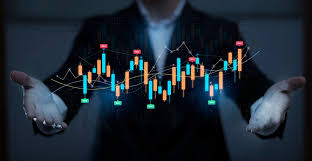
In the ever-evolving world of Forex trading, automated trading forex Online Trading CM has become a significant player, showcasing how automated trading systems can transform the way we approach the currency markets. Automated trading, also known as algorithmic trading, leverages software programs to execute trades based on pre-defined criteria. This article delves into the intricacies of automated trading in Forex, discussing strategies, tools, and the considerations necessary for success.
Understanding Automated Trading
Automated trading incorporates the use of technology to remove emotional and psychological factors that can cloud trading decisions. By developing an algorithm that follows specific indicators or trading signals, traders can execute orders at optimal market conditions. Unlike manual trading, automated trading systems operate around the clock, allowing for the exploitation of opportunities 24/7, which is particularly beneficial in the Forex market that is open continuously during the weekdays.
Benefits of Automated Forex Trading
The advantages of automated trading systems in Forex are numerous, making them an attractive option for both novice and experienced traders:
- Emotional Discipline: Automated systems remove the emotional aspect of trading, minimizing impulsive decisions.
- Backtesting: Traders can test their strategies against historical data to refine and optimize their algorithms.
- Speed of Execution: Automated trading systems can capitalize on market changes much faster than manual traders.
- Diversification: Automation enables traders to manage multiple accounts or trading strategies simultaneously, spreading risk across different assets and strategies.
Popular Automated Trading Strategies
There are various automated trading strategies employed by Forex traders. Here are some of the most popular:
1. Trend Following
This strategy is based on the idea that prices tend to move in trends. Automated systems are programmed to identify these trends and execute trades accordingly. Indicators such as moving averages and the Average Directional Index (ADX) are often utilized in this approach.
2. Mean Reversion
Mean reversion strategies assume that prices will revert to their historical averages. An automated trading system can identify when an asset is either overbought or oversold and place trades anticipating a return to the mean.

3. Arbitrage
Arbitrage strategies exploit price discrepancies across different markets or instruments. Automated systems can rapidly execute trades across various exchanges to capitalize on these differences.
Choosing the Right Tools for Automated Trading
Selecting the right tools and platforms is crucial for successful automated trading. Here are key considerations:
- Trading Platform: Choose a reliable trading platform that supports automated trading, like MetaTrader 4/5, NinjaTrader, or TradingView.
- Programming Knowledge: Familiarity with programming languages such as MQL4, MQL5, or Python can be beneficial in creating customized strategies.
- Broker Compatibility: Ensure your broker supports automated trading and the specific platform you choose.
- Risk Management Tools: Incorporate tools that can help manage risk effectively, such as stop-loss and take-profit orders.
Challenges and Risks of Automated Trading in Forex
While automated trading offers numerous advantages, it also comes with its set of challenges and risks:
- Market Conditions: Automated systems may not adapt well to sudden market changes or news events.
- Technical Failures: Software glitches or connectivity issues can lead to missed trades or errors in execution.
- Over-Optimization: Strategies that are overly optimized may perform well on historical data but fail in live trading.
Best Practices for Successful Automated Trading
To maximize the potential of automated trading in Forex, consider the following best practices:
- Start Small: Begin with a small trading account to test your automated strategies in live conditions.
- Regular Monitoring: Even though trades are automated, monitoring systems regularly can help catch issues early.
- Keep Learning: Stay updated on market trends, technology advancements, and trading strategies.
- Diversify Strategies: Implement multiple strategies to mitigate risks and improve performance.
Conclusion
Automated trading in Forex is revolutionizing how traders operate in the currency markets. By leveraging technology, traders can improve their execution speed and discipline while minimizing emotional interference. However, success in automated trading requires a solid understanding of market dynamics, diligent strategy development, and effective risk management. Whether you are a seasoned trader or new to Forex, the integration of automated trading systems can help you capitalize on market opportunities in ways that were previously unimaginable.
